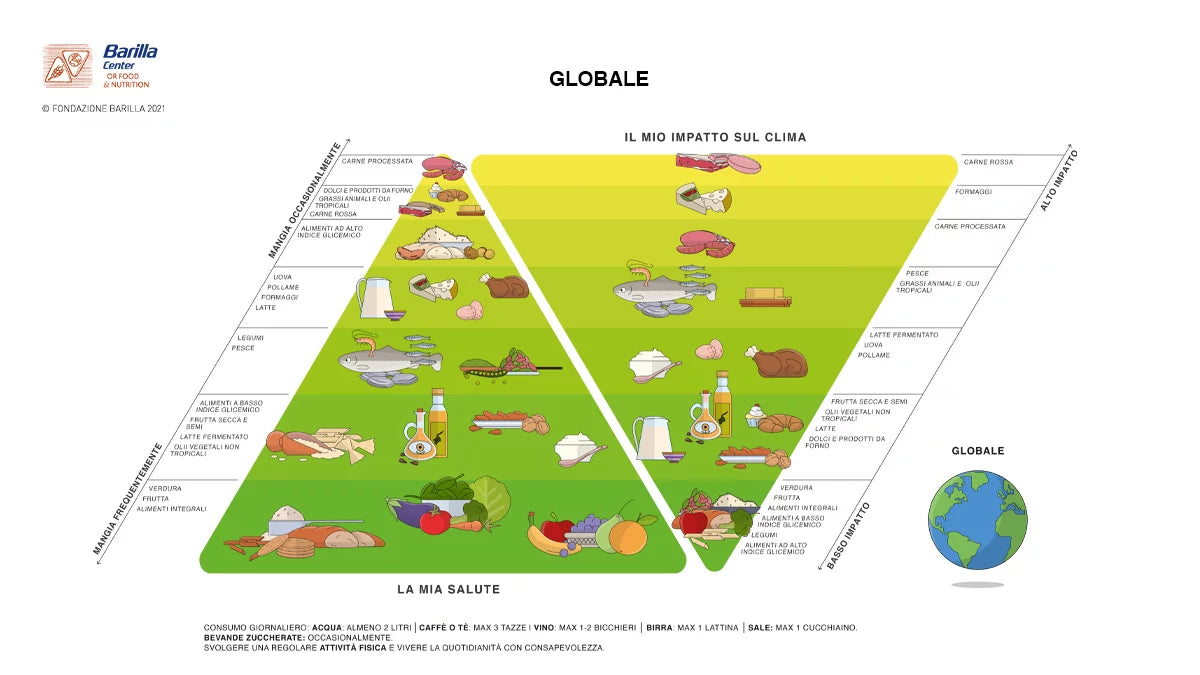November 15, 2021
Nutrition science has long represented foods in a food pyramid: at the base are foods rich in nutrients to be consumed more often, while at the top are those with a high energy density to be consumed in moderation. The foods at the base are mainly of plant origin.
Extra virgin olive oil, present in the pyramid, is recommended for daily consumption thanks to its polyphenols and phytosterols, which have a protective action on the body.
If we shift our attention from the health aspect to the environmental impact, we notice that the pyramid is inverted: thus the Environmental Pyramid is born. Foods of plant origin have a lighter environmental impact, while those of animal origin generate greater externalities.
In the environmental analysis of food products, impacts are assessed according to the Life Cycle Assessment (LCA) method, considering the generation of greenhouse gases (carbon footprint), land use (ecological footprint) and consumption of water resources (water footprint).
The "double pyramid" representation juxtaposes the two schemes, creating a unique approach to healthy and sustainable nutrition. Foods recommended for health are often also those with the lowest environmental impact.
Boniviri, with its mission, aims to create value for both those who grow and those who consume. It selects products from excellent small farmers that are "light" for the environment and healthy for those who consume them.




